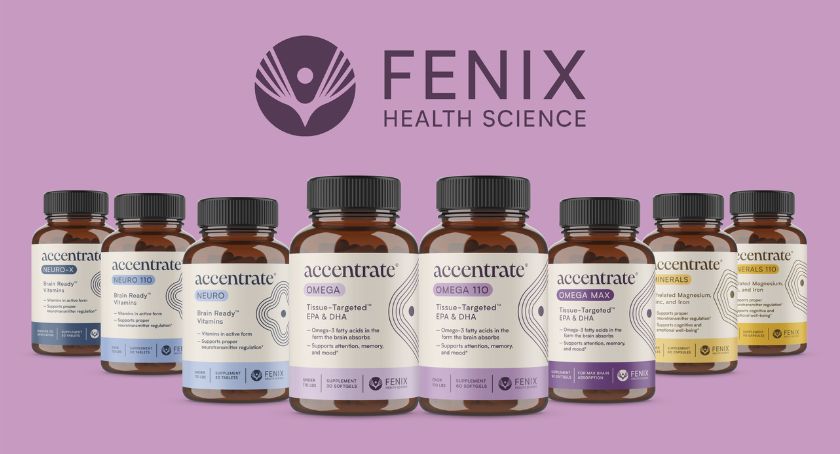Exclusives
Nutrition Industry Reacts to 2020-2025 Dietary Guidelines for Americans
Trade associations highlighted concerns with the federal recommendations for daily nutritional intakes, which will be standard until 2025.

By: Mike Montemarano
Following input from the Dietary Guidelines Advisory Committee, an independent panel of experts who make suggestions for updating the Dietary Guidelines for Americans, the USDA (U.S. Department of Agriculture) has issued the 2020-2025 Dietary Guidelines for Americans (DGA). The guidance sums up the most up-to-date recommendations regarding the dietary nutritional intakes for adults, children, infants, and pregnant mothers.
In a move that is highly significant for the entire industry, the most recent edition of the DGA specifically recommends supplementation for a number of demographic groups, formally recognizing the role that dietary supplements play in helping people meet nutrient needs not attainable from standard food intake alone. The guidelines also advise supplementation for specific groups of people, such as pregnant or lactating women, infants, children, and seniors. The need for supplements is strongly influenced by the access and affordability of healthy food, the DGA states.
Word from the Trade Associations
The Council for Responsible Nutrition, a trade association representing dietary supplement companies, specifically lauded the DGA’s new recommendations of consulting a medical provider on supplementation during the pregnancy and lactation stages of life, incorporating some recommendations that CRN specifically made.
For example, the guidelines instruct that all infants who are fed exclusively or partially human milk should take a vitamin D supplement of 400 IU per day, and continuing vitamin D supplementation after 12 months might be needed. The guidelines also recognize that iron is often in short supply in human milk, and recommend iron-fortified formulas if infants cannot be fed human milk.
Additionally, the guidelines recommend that pregnant or lactating women might need supplementation specifically for vitamin D, folic acid, iron, iodine, and choline. Consulting a healthcare provider on vitamin B12, iron, choline, zinc, iodine, and EPA/DHA may be necessary for vegetarian or vegan lactating mothers, the guidelines add.
Another recommendation which was missing from previous guidelines but returned this year was vitamin B12 supplementation for older adults, due to poor absorption from food observed in older populations.
“We’re pleased to see USDA and HHS recognize certain U.S. population groups do not achieve recommended nutrient levels from dietary intake alone,” Haiuyen Ngueyn, senior director of scientific and regulatory affairs at CRN, said.
Another noteworthy development is that this year’s DGA includes dietary advice specific to individuals suffering from one or more diet-related chronic diseases, for the first time since the publication of the 1985 edition of the recommendations. Furthermore, the guidance is informed not solely by the consumption of nutrients in isolation, but more broadly through dietary patterns. Lastly, the guidelines in this year’s edition vary across the lifespan, and include recommendations with more variation across all stages of life beginning with developmental ages.
The Natural Products Association (NPA) likewise expressed that it was generally enthusiastic about the developments made in this year’s edition of the DGA.
“This reinforces what we already know: that access to proper nutrition, especially for children and pregnant mothers, is critical to long-term health,” Daniel Fabricant, PhD, president and CEO of NPA, said. He hopes that these new recommendations are taken into account in public policies most heavily influenced by the DGA. He believes specifically that the USDA and HHS’s acknowledgements on supplementation warrant having the Supplemental Nutrition Assistance Program (SNAP) and the Special Supplemental Nutrition Program for Women, Infants, and Children (WIC) cover dietary supplements for the 8 million households receiving benefits from these programs.
“The next Congress and Administration can do more to ensure Americans have access to products that support their health, and expanding heath savings accounts and programs like WIC to include nutritional supplements is the best way to make that happen,” he said. “This report provides a real world look at how supplements are an integral part of the American diet at all stages of development.”
Some observers, including numerous medical associations, expressed surprise due to unmet recommendations from the Dietary Guidelines Advisory Committee, which, this year, advised that guidelines should clamp down on added sugars and alcohol due to further evidence suggesting their adverse impacts on public health have been underestimated.
Shortly after the DGA’s publication, GOED (The Global Organization for EPA and DHA Omega-3s) had some positive and some negative takeaways on the recommendations specific to the consumption of omega-3s. Summarily, the organization believes that in spite of mounting evidence supporting the role of EPA and DHA in promoting developmental, cognitive, cardiovascular, and other health benefits, there’s little mention of EPA and DHA specifically. (EPA and DHA were only mentioned four times in the latest edition, which was over 150 pages.)
GOED pointed to the Dietary Guidelines Advisory Committee report, which states that “moderate evidence indicates that total intake of omega-3 polyunsaturated acids, particularly [EPA] and [DHA] from food sources, by adults is associated with lower risk of cardiovascular disease.”
Furthermore, GOED took issue with the DGA’s heavy emphasis on previous guidance from the U.S. Food and Drug Administration (FDA) and Environmental Protection Agency (EPA) which ties methylmercury exposure to seafood in the absence of large-scale studies substantiating a significant direct risk.
Lastly, during a public comment period held by the Dietary Guidelines Advisory Committee, GOED requested that the DGAC investigate studies which evidence omega-3’s role in preventing early and preterm birth, which it believes warranted a recommendation for omega-3 supplementation in pregnant women, at the very least. This request was unmet, however, despite a 2018 Cochrane review of over 70 randomized controlled trials studying over 20,000 women which found significant associations between seafood consumption and reduced incidences of preterm birth.
Sugar and Alcohol
The 2020-2025 DGA recommends limiting added sugars to make up less than 10% of daily calories starting by age 2, the same as 2015, making apparent that it did not incorporate the committee’s suggestion of reducing added sugars intake to less than 6% of all daily calories.
Additionally, the committee advised in its report that new recommendations should allow for no more than one drink daily for either men or women, citing evidence that only health risks and no benefits come from alcohol consumption, however, the DGA still gives the “go-ahead” on up to two drinks daily for men, running contrary to recent epidemiological studies suggesting that the best option for public health is no drinking at all.
The American Institute for Cancer Research (AICR), for example, went so far as to say that USDA is ignoring evidence that drinking in quantities previously described as “moderate,” or even as little as one drink per day, elevates the risk of up to six types of cancer.
“AICR’s research has found strong evidence that diets high in red and processed meat increase the risk of colorectal cancer,” the organization said in a statement. “Added sugars provide excess calories and increase the risk for overweight and obesity, which AICR’s evidence review has found is a risk factor for 12 types of cancer.”
“Systematic literature reviews and meta-analyses conducted as part of the World Cancer Research Fund and AICR’s Continuous Update Project have found strong evidence that the consumption of alcoholic drinks increases the risk of six types of cancer, with convincing evidence showing elevated risk with consumption of less than even one serving of alcohol per day, for some cancers,” Dr. Nigel Brockton, AICR’s vice president of research, added.





















